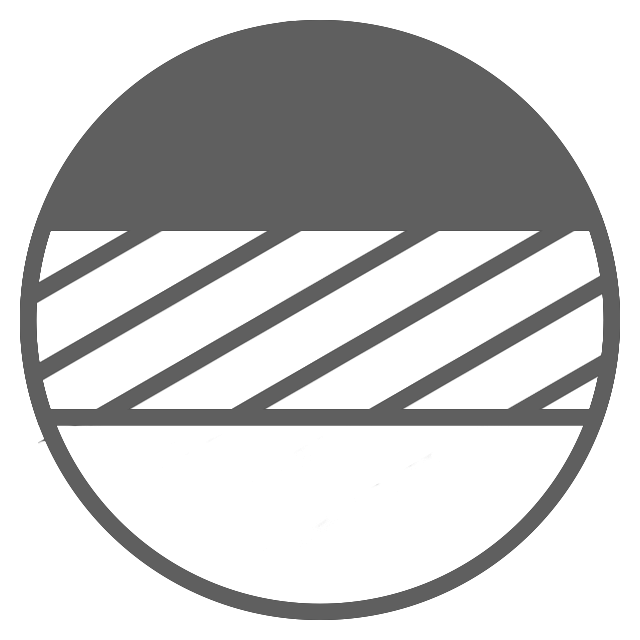Ceiling lamps do more than light a room—they shape mood, define scale, and add character through form and material. From the warmth of handwoven bamboo to the sharp gloss of enamel and the rich patina of antique brass, the right choice can anchor a space and transform its atmosphere.

Ceiling lighting does more than brighten a room. The right lamp shapes mood, anchors a scheme, and tells a story through material and craft. Three materials stand out for character and performance: handworked bamboo, high-gloss enamel on steel, and iron finished in antique brass. Each has a distinct voice, from the soft glow and texture of woven bamboo to the crisp, industrial punch of enamel and the warm patina of aged metal.
The following guide shares how these lamps look, feel, and function, with practical notes on sizing, bulbs, and installation, plus a snapshot of three thoughtfully made pieces.
Why ceiling lamps matter more than you think
A ceiling lamp sets the baseline for how a space feels at all times of day. It frames the ceiling plane, affects shadow and contrast, and influences how colours read on walls and furnishings. Form and finish matter as much as lumens.
- Form determines spread. Domes and cones push light downwards, while open baskets and lanterns create halo effects on ceilings and walls.
- Material sets the mood. Natural fibres warm and soften. Glazed metal feels precise and graphic. Aged metal adds depth.
- Scale holds the room together. A 30 to 60 cm pendant can anchor a dining table; multiple smaller shades suit kitchen islands or corridors.
Get those three right and the rest of the scheme falls into place.
Handcrafted bamboo: texture, culture, and comfort
Bamboo shades draw on centuries of craft across East and Southeast Asia. Weavers shape thin splits into conical, spherical, and cylindrical forms, from closed pleats to open lattices. The result is light with grain and softness that plastic and plain metal rarely match.
- Classic shapes include round or elongated lanterns, compact cylinders, and conical “hat” silhouettes.
- Weaving patterns vary: simple basket weaves give gentle sparkle; hexagonal lattices create lively dappling; pleated, hand-folded strips give layered, linear shadows.
- Common diameters range from 30 to 60 cm for pendants that make an impact without overwhelming a room.
Because bamboo is pale and gently translucent, even solid panels glow. Use warm-white LED lamps around 2700 to 3000 K to amplify that cosiness. In living rooms and bedrooms, bamboo calms the visual field. In hospitality spaces, it brings intimacy to tables and lounge areas.
A piece crafted in Vietnam with a hand-folded shade and a dusty green iron detail shows how heritage technique and a contemporary palette meet. The fold lines shape light in soft bands, while the green hardware adds a refined accent against pale slats. It looks simple at first glance, yet the closer you look, the more nuance you find.
Where bamboo feels at home
- Scandinavian-inspired rooms that mix oak, wool, and chalky paint
- Garden rooms and sunrooms, where natural fibres link outdoors and in
- Minimal schemes that need warmth without clutter
- Dining areas that benefit from a softer pool of light and a welcoming glow
Three characterful lamps at a glance
Below is a quick comparison to help with shortlisting. Specifications are distilled from current product notes; always confirm details on the label or with the retailer before ordering.
|
Model |
Materials & Finish |
Origin |
Light Source & Wiring |
Size/Notes |
Typical RRP |
|---|---|---|---|---|---|
|
Bamboo ceiling lamp (Item MKDV051124-2) |
Hand-folded bamboo shade with iron elements in dusty green |
Vietnam |
Single lamp holder typical for this category; check fitting at purchase; supplied with ceiling cap |
Warm, softly patterned light; craft-forward look |
€93.00 / DKK 675.00 |
|
Enamel ceiling lamp (Item L59219ST) |
Iron body, hand-lacquered high-gloss enamel; also offered in a steel-like finish |
India |
Two E27 lamps, 40 W max each; 1.5 m three-core cable; ceiling cap included |
1950s industrial profile with tailored edges |
€151.50 / DKK 1,100.00 |
|
Iron ceiling lamp, antique brass |
Iron shade with antique brass finish; industrial form |
India |
E27, 40 W max; 2 m three-core cable |
Warm metallic tone, suits modern and eclectic schemes |
Price varies by retailer |
Notes:
- Some webshops ship worldwide. Stock changes frequently, so availability is not guaranteed.
- Cable lengths can usually be shortened during installation. Ask for extension options for tall ceilings.
Light quality: what your eyes actually feel
- Bamboo, pleated or woven: expect low glare and a calming spread. Pleats give gentle striping on nearby surfaces; woven lattices scatter dots and diamonds. The material itself warms the light slightly, adding a golden tint without filters.
- Enamel on steel: a reflective interior pushes more light downward and outward with clarity. Glossy enamel amplifies brightness and edge definition, suiting tasks and active spaces like kitchens.
- Antique brass over iron: the finish absorbs and reflects in subtle ways. Compared with white enamel, it feels moodier and richer, with a soft low-sheen glow. Ideal when the lamp is part function, part statement.
Small variations in bamboo grain or patina create subtly unique patterns from piece to piece. That little unpredictability adds life to the room.

Enamel: colour, gloss, and industrial poise
Why enamel feels so clean and confident comes down to material science. Vitreous (porcelain) enamel is fused glass on steel, fired at high temperatures to create a hard, glossy skin. It shrugs off heat, humidity, and knocks, and it cleans with a simple wipe. Powder-coated finishes offer a satin or matte feel and a wide colour palette, though they are less glass-hard than porcelain.
The 50s-inspired enamel ceiling lamp above uses a high-gloss lacquer over iron, with a precise lip and profile that reads tailored and sharp. Two E27 lamps deliver bright, even coverage. In monochrome kitchens, a glossy white or steel-toned shade signals order and clarity. In studios and dining rooms, deeper colours add energy and rhythm.
Colour cues:
- White, cream, or pale grey brightens ceilings and spreads light generously.
- Black, slate, and deep olive add silhouette and contrast.
- Accents like cobalt, signal red, or heritage green introduce a retro note without overwhelming the room.
Maintenance is as simple as it gets. Grease or steam from cooking wipes away, and the finish resists fading. This is why enamel shades still work as hard now as they did in factories and workshops.
Antique brass on iron: aged tone, modern appeal
Antique brass finishes are created by patinating brass or brass-plated metal to give a mellow, time-worn tone. The look sits somewhere between gold and bronze, with veins and shifts in colour that bring depth. On iron shades with industrial lines, that warmth softens the rigour of a loft interior and complements timber, leather, and stone.
Where it shines:
- Minimalist spaces that need a single warm metallic accent
- Industrial rooms with brick and concrete that benefit from a richer metal than chrome
- Eclectic mixes of vintage furniture, patterned rugs, and art, where patina helps tie things together
With an E27 fitting and a 2 m cable, the Indian-made iron lamp described earlier offers practical reach for high ceilings, and the finish turns a simple shape into a feature. Pair with a dimmable warm LED filament for a gentle, inviting evening glow.
Choosing the right bulb: clarity, colour, and cost
Pick the lamp, then tune the bulb. The fitting sets the cap type and maximum wattage; the bulb sets the feel.
- LED for everyday use. A 9 to 12 W LED gives roughly the output of a 60 W incandescent, at a fraction of the energy and heat. Lifespans of 15,000 to 25,000 hours cut maintenance.
- Colour temperature. 2700 K feels warm and domestic; 3000 K is a touch crisper; 4000 K reads neutral and suits worktops. Bamboo loves warmth. Enamel tolerates both warm and neutral with ease. Antique brass benefits from warmer tones that flatter the metal.
- Lumens, not watts. Aim for 750 to 800 lm to replace a 60 W incandescent. Large rooms or multi-shade fixtures may need 1100 to 1600 lm in total.
- Dimming. Use dimmable LEDs with compatible dimmers for smooth control. This adds flexibility to dining and living spaces.
- CRI matters. A colour rendering index of 90+ keeps food, fabrics, and skin tones looking natural.
Never exceed the maximum wattage marked on the fixture. LEDs help here because they run cool while producing strong light.
Proportion and placement: getting scale and height right
Good light is as much about position as it is about product. A few tested rules make planning easier.
- Diameter vs room size. For a typical 3 by 4 m room, a 35 to 45 cm pendant sits comfortably. Open-plan rooms can handle 50 to 60 cm.
- Dining tables. Hang the shade so the bottom sits about 70 to 85 cm above the tabletop. This avoids glare while lighting faces and plates.
- Kitchen islands. Two or three smaller pendants spaced evenly are better than a single large one. Keep 60 to 75 cm between shades, centred over work zones.
- Corridors and entries. Choose compact shades with 210 to 230 cm clearance beneath for headroom.
- Clusters and cascades. Group smaller bamboo shades at staggered heights for sculptural interest and rich texture without bulk.
Measure cable droop and sightlines from key seating positions. A lamp can look ideal when viewed from one angle yet feel too low from another.
Installation and safety: what to check before you start
Most pendants ship with a ceiling cap, bracket, and cable. The enamel model listed above includes a 1.5 m three-core cable; the antique brass iron pendant includes 2 m. Both can be shortened during installation. If your ceiling is high, ask about longer cable kits or chain options.
Key points:
- Junction box. Ensure there is a secure, appropriately rated ceiling box or mounting point. Plasterboard alone is not a fixing.
- Weight and fixings. Heavy shades or concrete ceilings may need specialist anchors. If unsure, call a qualified electrician.
- Earth connection. Three-core cables include an earth; connect it where required by the fixture and local regulations.
- Voltage. Check compatibility with your mains supply, typically 220 to 240 V in the UK.
- Heat and ratings. Respect the maximum wattage and avoid enclosing lamps not designed for enclosures. LEDs reduce heat build-up and are kinder to shades and wiring.
A straightforward replacement in an existing ceiling box is often a simple task for experienced DIYers. New points, vaulted ceilings, or multi-drop clusters warrant professional help.
Care and longevity
Each material rewards a slightly different approach.
- Bamboo
- Dust gently with a soft brush or microfibre cloth.
- Avoid soaking. If needed, a barely damp cloth followed by a dry wipe keeps the weave tidy.
- Fit warm, low-heat LED lamps to protect the fibres over time.
- Enamel on steel
- Wipe with a soft cloth and mild soapy water, then dry. No abrasives.
- Ideal for kitchens and bathrooms, as the glazed surface resists steam and stains.
- Chips are rare; if they occur, they tend to be cosmetic and do not affect performance.
- Antique brass on iron
- Use a dry cloth for regular care. If sealed, a lightly damp cloth is fine. Avoid harsh chemicals that strip patina.
- Expect character to build slowly. Slight variations in tone are part of the appeal.
Bulbs define much of the running cost and thermal load. High-quality LEDs reduce energy bills, keep shades cooler, and extend the life of everything around them.

Style notes: pairing finishes with interiors
- Bamboo with pale timber, limewash, and linen delivers calm, tactile rooms. Add plants and textured rugs for a relaxed feel.
- Enamel with shaker cabinets, tiled splashbacks, or exposed brick gives kitchens and studios precision and purpose. White walls and a single coloured shade create a clean focal point.
- Antique brass with walnut, leather, and mineral paint colours like deep green or oxblood reads refined and grounded. A single aged-metal pendant can be enough to anchor a space.
Mixing is encouraged. A bamboo pendant over a reading nook, an enamel shade above the island, and antique brass in the hallway can share an interior without clashing, as each serves a different role and brings its own atmosphere.
Good ceiling lamps set the tone for daily life. Choose materials that suit how you want the room to feel, fit the scale to your architecture, and let the light do the rest. Whether you gravitate toward the hand-finished warmth of bamboo, the crisp confidence of enamel, or the lived-in glow of antique brass, there is real value in lighting that works hard and looks better every year.





